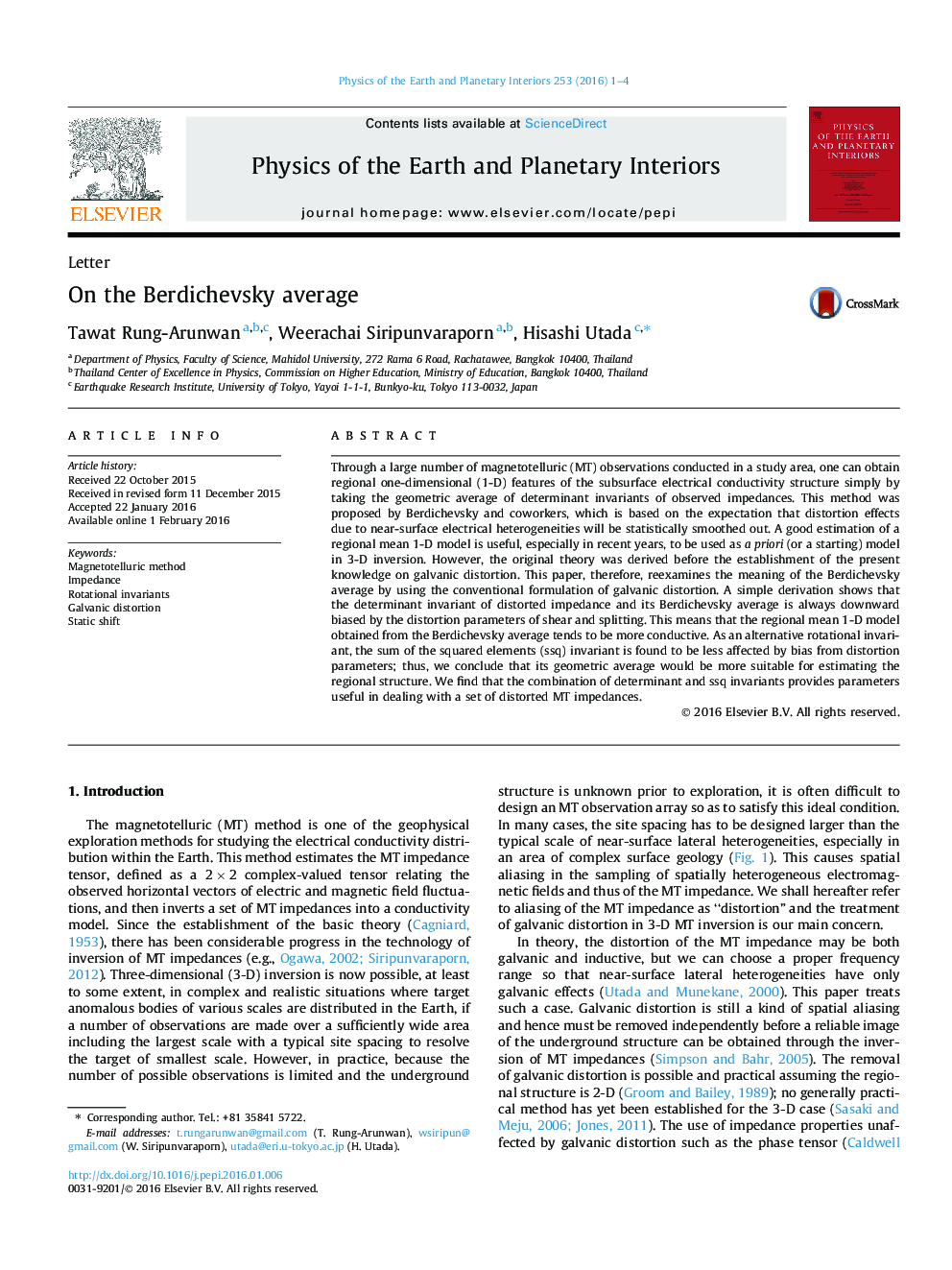| Article ID | Journal | Published Year | Pages | File Type |
|---|---|---|---|---|
| 4741364 | Physics of the Earth and Planetary Interiors | 2016 | 4 Pages |
•A meaning of averaging determinant impedances in magnetotellurics is clarified.•A scheme to estimate regional mean 1-D model of electrical conductivity is proposed.•A scheme to describe galvanic distortions in a set of impedances is proposed.
Through a large number of magnetotelluric (MT) observations conducted in a study area, one can obtain regional one-dimensional (1-D) features of the subsurface electrical conductivity structure simply by taking the geometric average of determinant invariants of observed impedances. This method was proposed by Berdichevsky and coworkers, which is based on the expectation that distortion effects due to near-surface electrical heterogeneities will be statistically smoothed out. A good estimation of a regional mean 1-D model is useful, especially in recent years, to be used as a priori (or a starting) model in 3-D inversion. However, the original theory was derived before the establishment of the present knowledge on galvanic distortion. This paper, therefore, reexamines the meaning of the Berdichevsky average by using the conventional formulation of galvanic distortion. A simple derivation shows that the determinant invariant of distorted impedance and its Berdichevsky average is always downward biased by the distortion parameters of shear and splitting. This means that the regional mean 1-D model obtained from the Berdichevsky average tends to be more conductive. As an alternative rotational invariant, the sum of the squared elements (ssq) invariant is found to be less affected by bias from distortion parameters; thus, we conclude that its geometric average would be more suitable for estimating the regional structure. We find that the combination of determinant and ssq invariants provides parameters useful in dealing with a set of distorted MT impedances.
